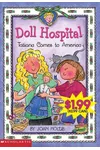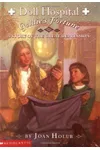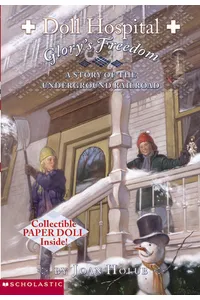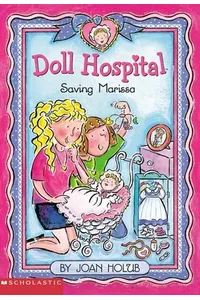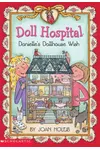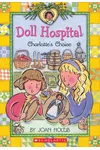Step into the enchanting world of the Doll Hospital series, where broken dolls whisper tales of history and adventure! Written by Joan Holub, this charming children’s series follows sisters Lila and Rose as they uncover their grandmother’s magical ability to repair dolls and reveal their stories. Each book weaves a modern-day narrative with historical fiction, introducing young readers to pivotal moments like the Underground Railroad and the Great Depression through the eyes of beloved dolls.
Perfect for kids who love dolls, history, or heartwarming tales, Doll Hospital blends education with storytelling in a way that’s as cozy as a grandmother’s hug. Let’s explore how this series came to life, its captivating stories, and why it’s a hidden gem for young readers!
How Doll Hospital Began
Joan Holub, a New York Times bestselling author with a knack for children’s fiction, launched the Doll Hospital series in 2002. Inspired by her love for history and storytelling, Holub crafted a unique premise: a grandmother, dubbed 'Far Nana,' who runs a doll hospital and channels the life stories of the dolls she fixes. With her background in fine arts and experience in children’s publishing, Holub designed the series for young readers, blending lighthearted adventure with serious historical themes. The result? A six-book series that ran until 2004, capturing the hearts of kids and even some nostalgic adults.
The Heart of Doll Hospital
The series centers on sisters Lila (8) and Rose (10), who move in with their quirky grandmother while their parents work abroad. As they adjust to life with Far Nana, they discover her gift for 'reading' dolls’ pasts, each tale unfolding as a story-within-a-story. Key books include Tatiana Comes to America, where a doll recounts a Jewish girl’s escape from 1907 Russia to Ellis Island, and Glory’s Freedom, which follows a doll’s journey with a slave girl on the Underground Railroad. Goldie’s Fortune dives into the Great Depression, while Saving Marissa explores 1950s family dynamics through a cherished babydoll.
Holub’s storytelling shines in its balance of heavy themes—immigration, slavery, economic hardship—with a gentle, age-appropriate tone. The dolls’ first-person narratives make history relatable, while Lila and Rose’s modern struggles, like fitting in or missing their parents, ground the series in universal emotions. The setting, a cozy doll hospital, adds a magical, almost whimsical backdrop that invites readers to see history through a child’s lens.
The series’ style is concise, with books rarely exceeding 200 pages, making them perfect for young readers with shorter attention spans. Yet, Holub doesn’t shy away from tough topics, earning praise for tackling issues like persecution and orphanhood with sensitivity and hope.
Why Doll Hospital Resonates
Doll Hospital stands out for its ability to educate without preaching, weaving lessons about resilience, empathy, and cultural history into engaging stories. Fans, from kids to parents, love how it sparks curiosity about the past—many reviews highlight daughters hooked after reading the first book in school book clubs. Its niche appeal, blending doll-centric storytelling with historical fiction, makes it a unique addition to children’s literature, often compared to classics like Midnight in the Dollhouse.
Though the series ended in 2004, its legacy lives on in its ability to connect generations. Parents reading with their kids find nostalgic 'Toy Story' vibes, while young readers discover history in a way that feels personal and fun. The inclusion of paper dolls with each book adds a playful, collectible charm that keeps the series memorable.
- Publication Years: 2002–2004
- Number of Books: 6
- Target Audience: Grades 3–5
- Key Themes: History, family, resilience
Grab Tatiana Comes to America and dive into Doll Hospital’s magical world of dolls and history! Whether you’re a young reader or a parent seeking a meaningful story, this series promises a heartwarming journey through time.
